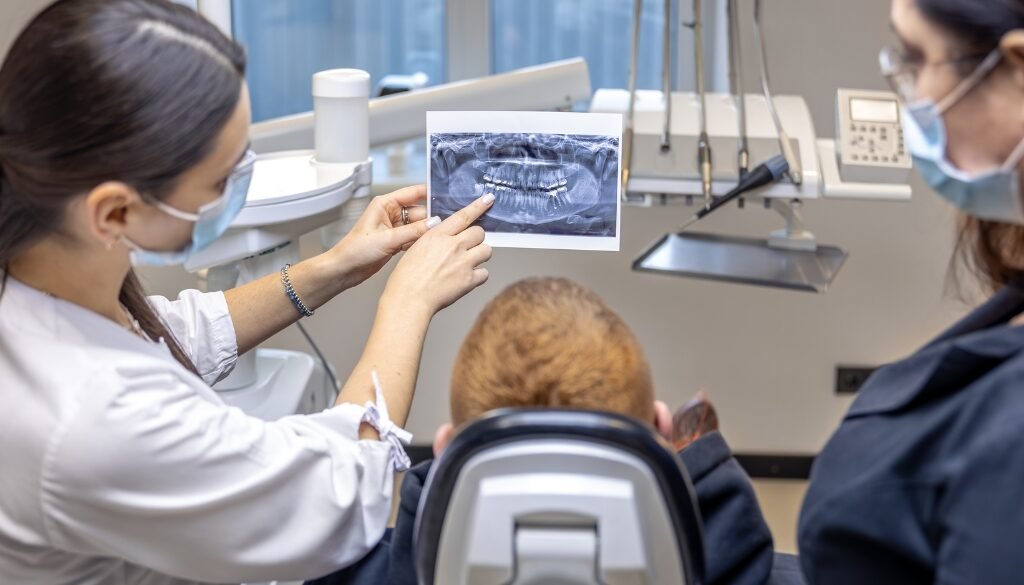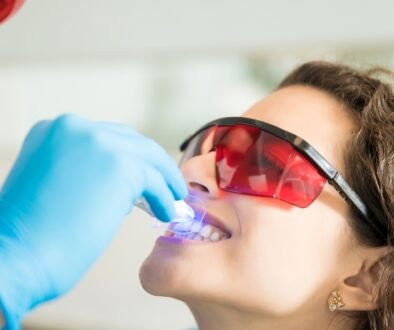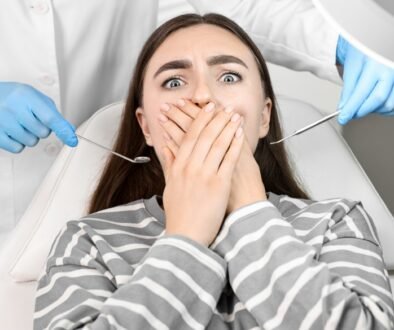How Intraoral Scanners Are Changing Dental Impressions
Dental technology continues to evolve rapidly, with one of the most impactful advancements being the use of intraoral scanners. These digital devices are revolutionising how dental impressions are taken, offering a cleaner, quicker, and far more comfortable alternative to traditional methods.
This movement is immensely benefiting both patients and dental practitioners, especially in tech-savvy, innovative dental offices. We are excited to leave archaic alginate impressions behind and use precise digital scanners, offering improved accuracy, efficiency, and enhanced patient satisfaction.
The End of Traditional Alginate Impressions
For many years, alginate impressions were the standard in dentistry. Dentists used trays filled with a putty-like material, which were inserted into the mouth and held in place until they set. The process was not only uncomfortable, often causing gagging or anxiety, but also prone to errors due to patient movement or improper material setting.
Even minor flaws in conducting the impression can lead to incorrect impressions, resulting in repeat appointments, longer waiting times, and ill-fitting restorations.
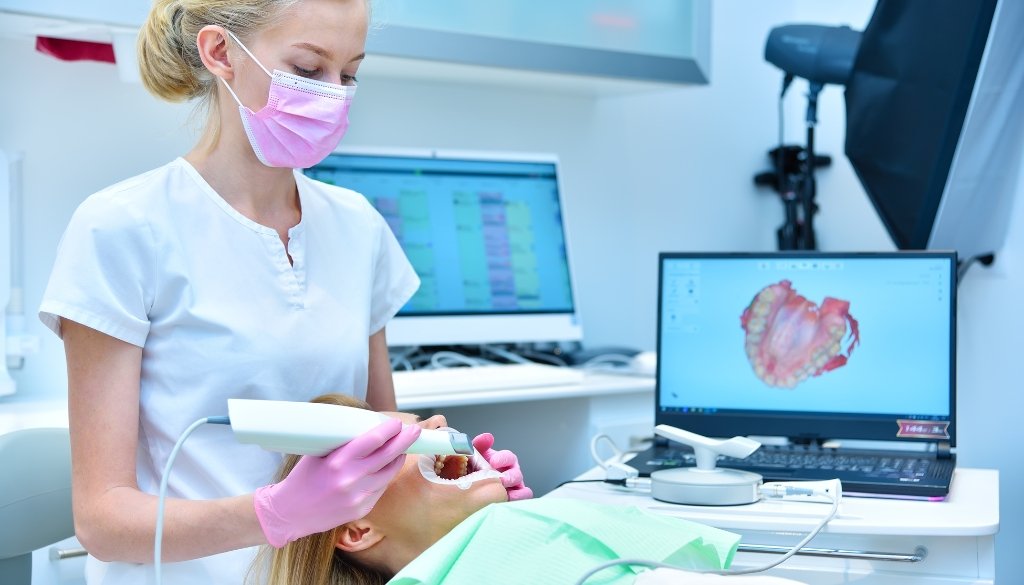
The Advent of Intraoral Scanners
The advent of intraoral scanners has completely revolutionised the impression process. These handheld scanners capture and download hundreds of high-resolution photos per second to produce a precise 3D representation of the patient’s teeth and gums in real-time. There are no sticky materials or uncomfortable trays involved, just one continuous and comfortable experience!
Patients appreciate the speed and comfort, while dentists benefit from the accuracy and immediate access to digital data for use in treatments like crowns, bridges, implants, and aligners.
Intraoral Scanners in Dubai: Leading with Innovation
Dr Prashanth Balakesavan, who has been practising dentistry in Dubai for over two decades, is a well-respected dentist who utilises cutting-edge technology as part of his focus on precision and comfort while treating his patients. In presenting the advantages of intraoral scanning, Dr Prashanth has a clear focus on providing comfort in the planning and improving the patient care experience.
By incorporating digital scan technology into his treatment identification, Dr Prashanth has effectively added an unmatched level of accuracy and speed to every case he treats, regardless of whether it is restorative, cosmetic, or orthodontic.
Clinical Advantages of Intraoral Scanners
1. Increased Accuracy
By eliminating most discrepancies associated with traditional materials, digital impressions produced with an intraoral scanner are more accurate. The 3D scan provides a more reliable basis for creating restorations that fit perfectly and function optimally.
2. Faster Workflow
The entire process from scanning to lab coordination is faster. Digital files are transmitted instantly to dental labs, reducing turnaround times for treatments such as crowns or clear aligners.
3. Comfort for Patients
There is not a gag reflex or any pain or discomfort involved. The small scanning wand can easily glide over the teeth with no contact, so even those with oral fear or a gag reflex will not have an issue.
4. Live Visualization
Patients can see their scans live on a monitor which helps them understand their oral status, and allows them to appreciate what the treatment will be for their dental condition. This transparency will help foster trust and improve acceptance for treatment plans.
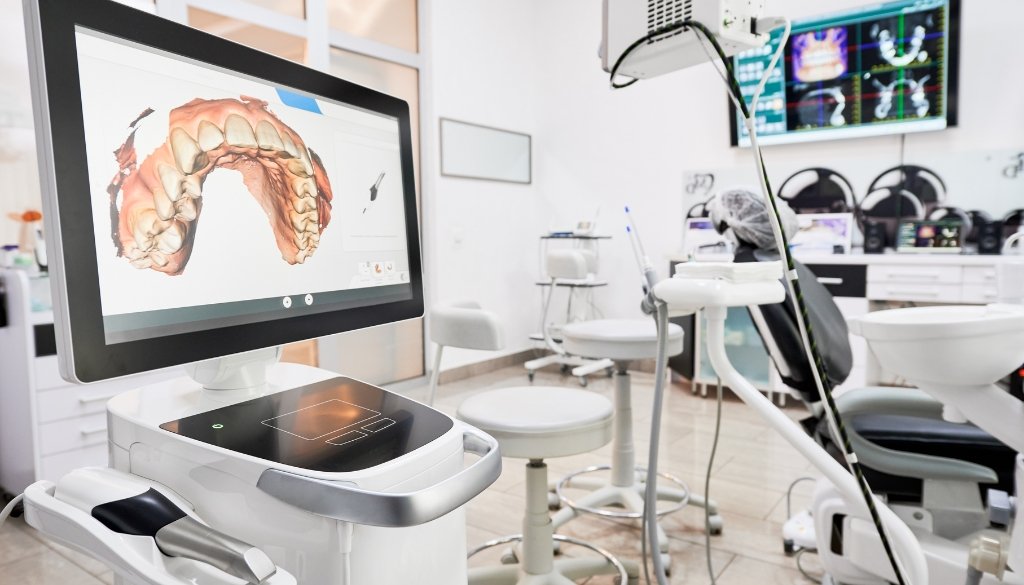
Just the Impressions: Farther Applications
Intraoral scanners are not only a replacement for alginate reaction impressions, they play a huge role in:
- Implant planning: accurate position through mapping with relative to gum and bone structure.
- Clear aligner therapy: accurate orthodontic movement.
- Smile design: our applications to aesthetic restorations.
- Change monitoring: Record-keeping for you, as a dentist, to visualise changes in cavities over time.
Digital scanning provides a long-term record of oral health, enabling proactive treatment and improved preventive care.
Dr. Prashanth’s Commitment to Patient-Centric Innovation
Dr Prashanth’s approach to dentistry effectively combines accuracy, empathy, and advancements in technology to deliver exceptional care. His use of intraoral scanner technology illustrates his modern philosophy and maximises accuracy while minimising discomfort.
Whether preparing for a complex restoration or simply maintaining a check-up, Dr. Prashanth combines the latest advancements in dental technology with every procedure to ensure his patients achieve predictable, pleasing results.
Frequently Asked Questions (FAQ)
1. Is a digital dental scan painful?
No, it is entirely pain-free. Intraoral scanners do not touch the teeth or gums; they capture images from a short distance, making the experience gentle and comfortable.
2. How long does a dental scan take?
Most intraoral scans are completed in under five minutes. Patients can relax their mouths sooner, and they can take breaks whenever needed.
3. Are intraoral scanners safe?
Yes. Intraoral scanners use safe, visible light to capture images, with no radiation, making it safe for all ages of patients to be scanned.
4. Can children and older adults be scanned?
The scanner is excellent for both children and older adults, particularly for those with difficulties using conventional trays.
5. Will I still need a follow-up visit?
In many cases, yes. The scan helps plan your treatment, such as designing a crown or aligner, and you may need to return for placement during a follow-up visit.
However, the number of appointments is usually reduced thanks to faster processing.
6. Can I see my 3D scan during the appointment?
Yes! One of the most engaging features of digital scanning is real-time visualisation. Patients watch the 3D model take shape in real time, which helps them better understand their dental health.
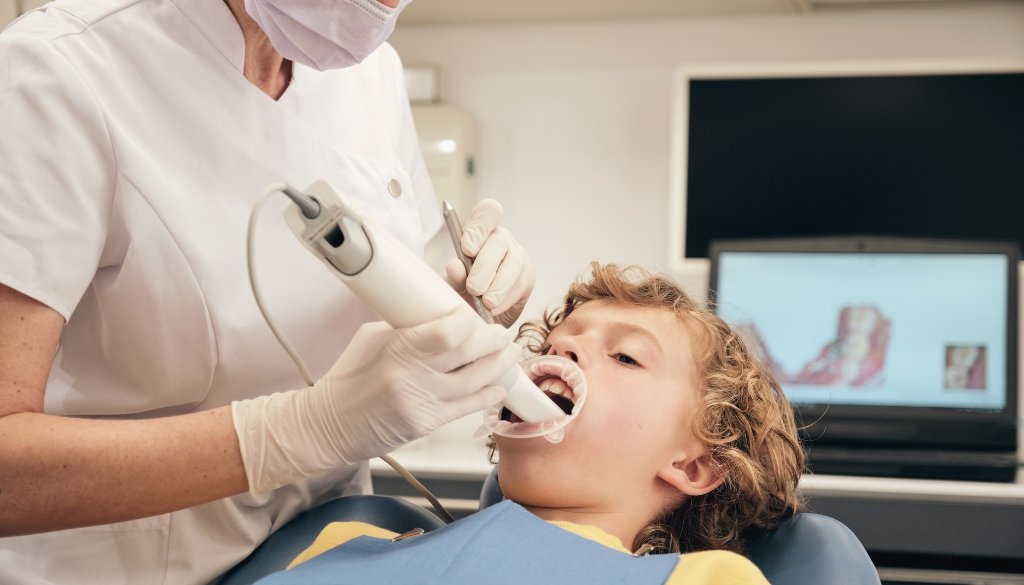
Final Thoughts
Intraoral scanners are changing the dental care industry by eliminating the outdated methods of impressions with cleaner, faster, and more precise digital impressions. Moving on to a new and different impression material enhances patient comfort and accuracy in the delivery of treatment, not solely a technological change.
With the help of experts like Dr Prashanth Balakesavan, embracing this digital transformation, patients will be provided with a new level of care that possesses a genuinely world-class level of innovation and personalisation. From diagnostics to treatment planning, intraoral scanning is redefining modern dentistry – one smile at a time.

